Abstract
An audit response allows access to an existing score from a subject's own performance (self audit) or from his coactor's performance (coactor audit). A previous study found that social stimuli (coactor present) increased audits relative to a non-social (no coactor) condition. The increase, designated a social-stimulus effect, was found to be due more to the coactor's score than to his mere presence. This finding suggested that the difference between self and coactor scores might affect the size of the social-stimulus effect. In the present study, six pairs of human subjects matched-to-sample for points that were exchangeable for money. During a session, matching-to-sample problems were distributed so that a subject's score was ahead, behind, or about even with his coactor's score. The even condition produced the largest social-stimulus effects, i.e., the most audits that could not be attributed to non-social variables such as time or number of problems. The even condition may have produced the largest social-stimulus effects because it was the only condition where the major social reinforcer (being ahead) could be both present or absent and, consequently, the even condition was the only one where audits had a discriminative function with respect to the presence of the major social reinforcer.
Full text
PDF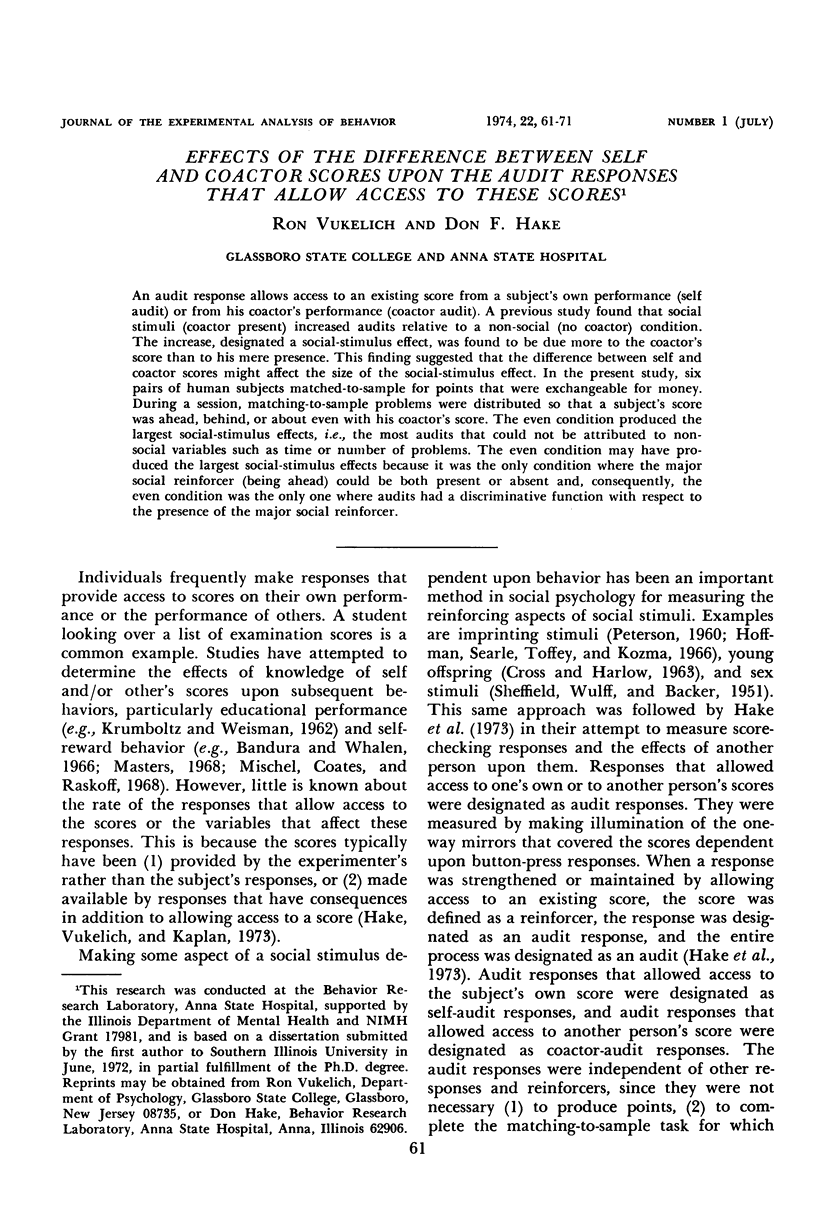
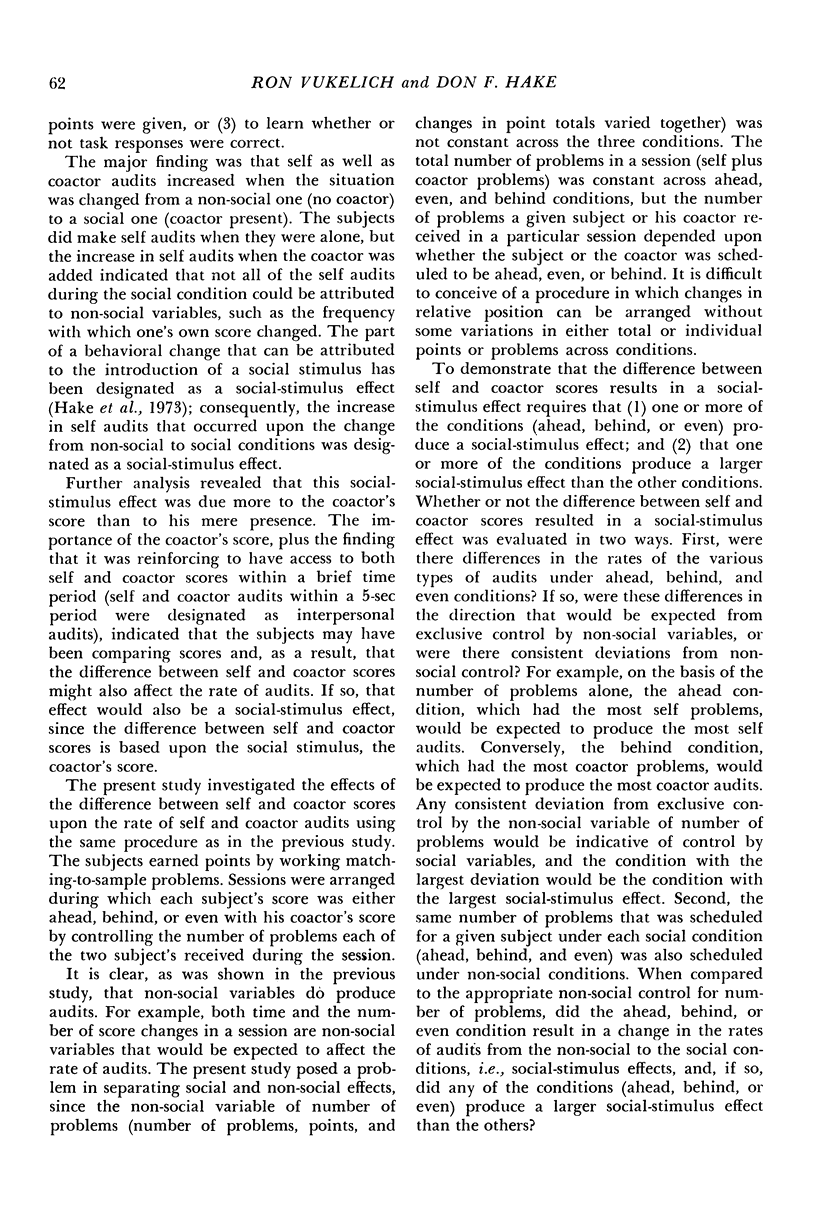
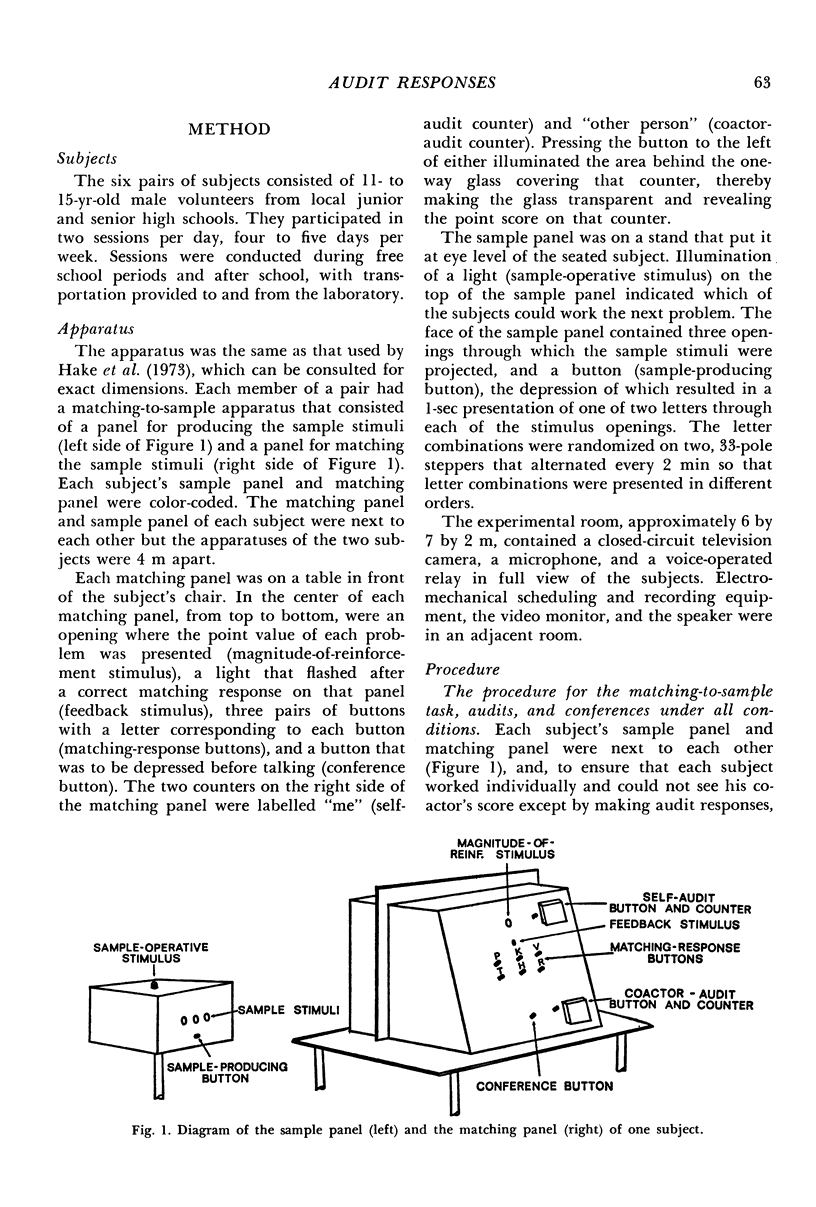
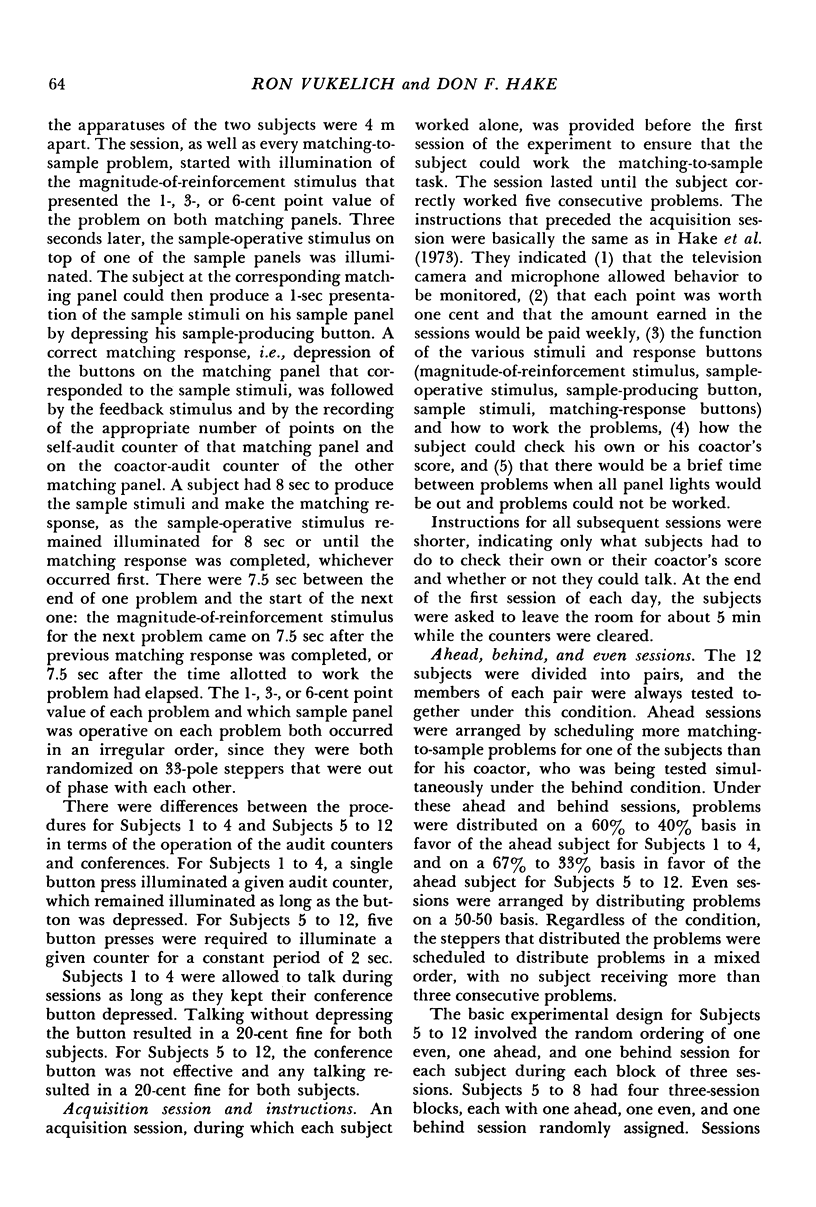
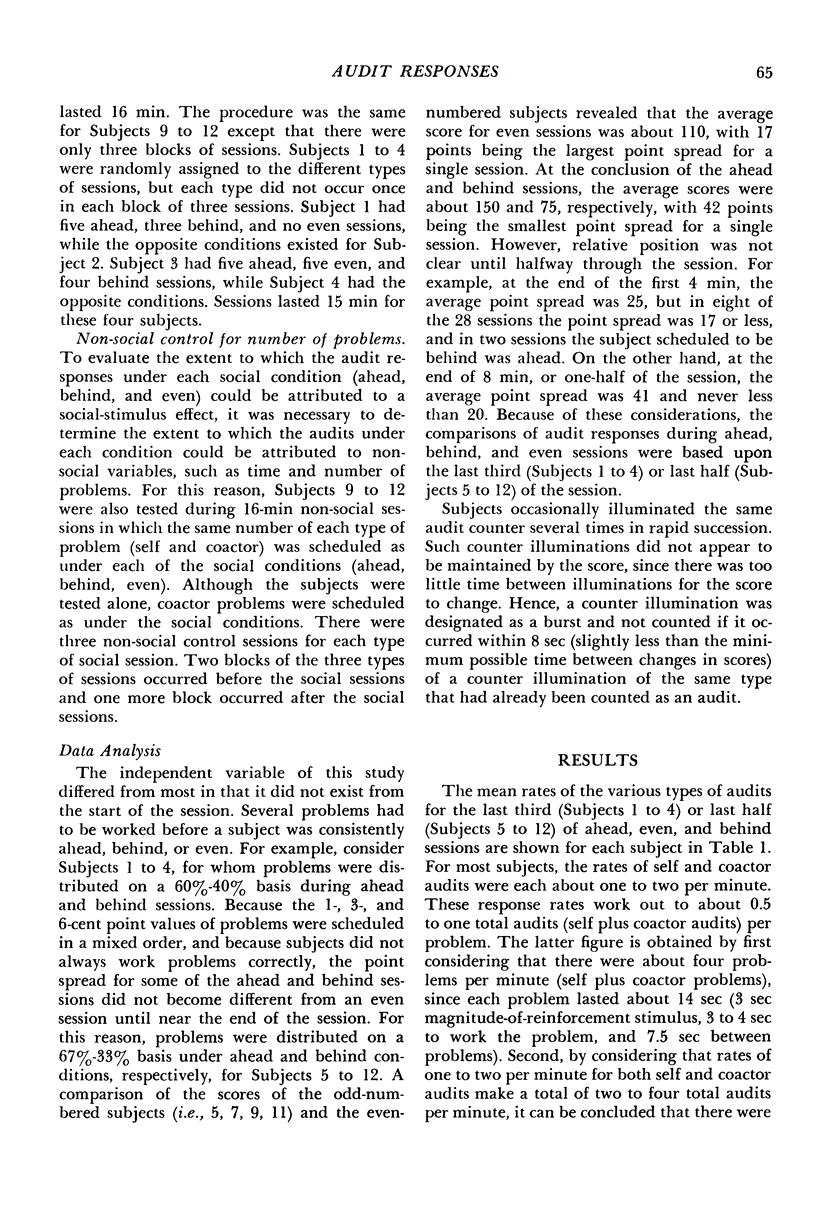
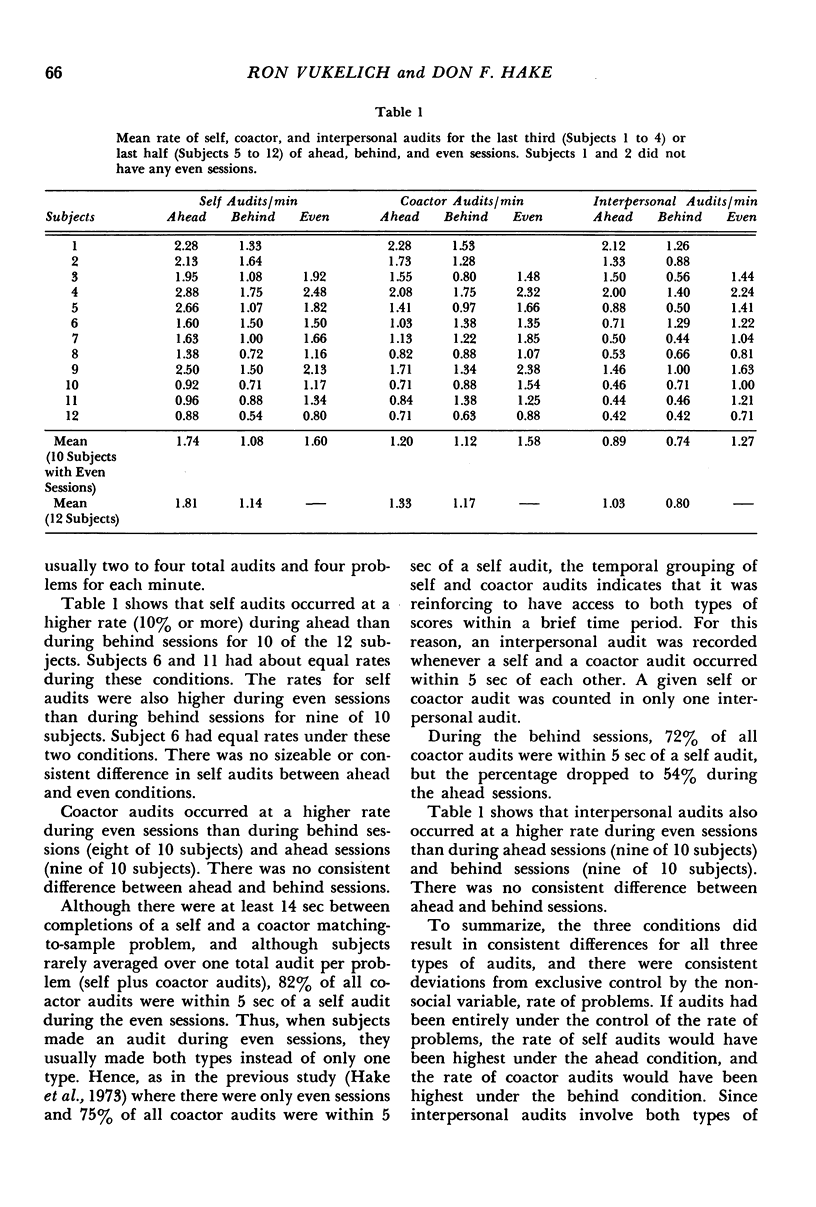
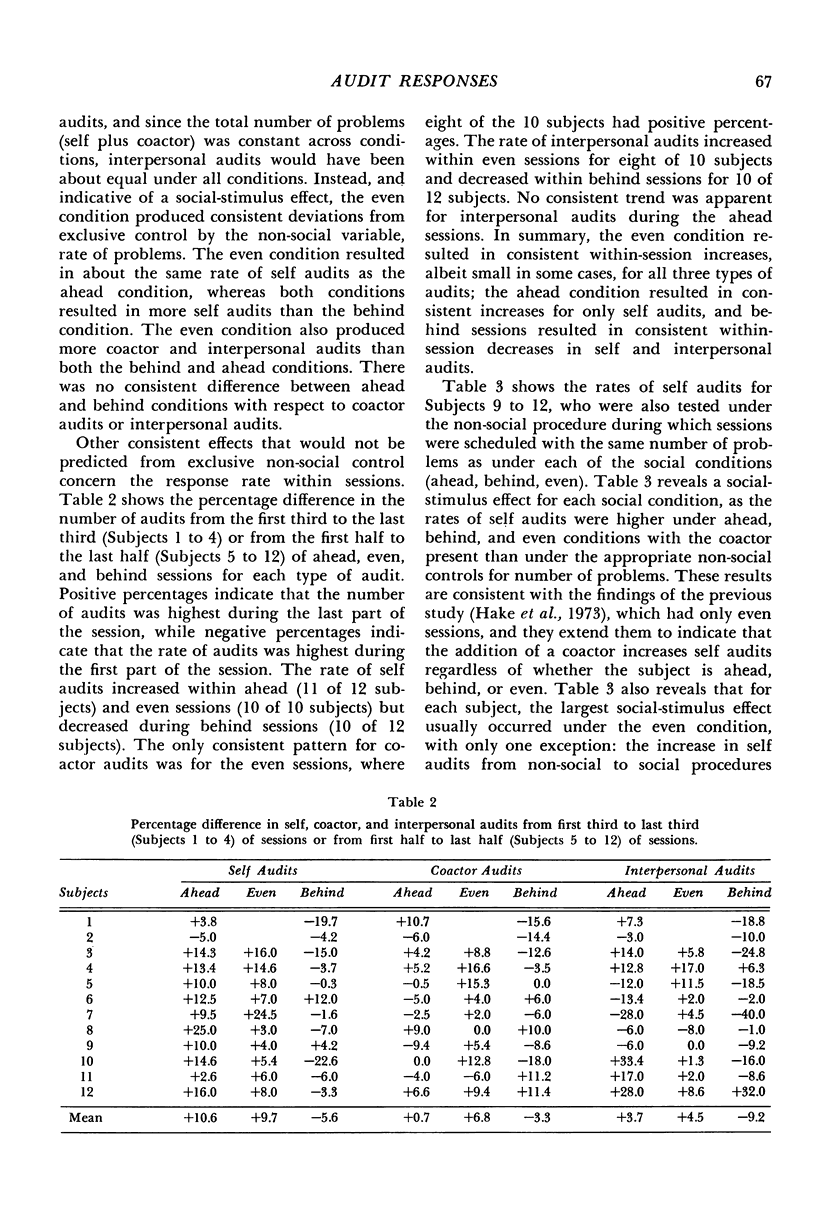
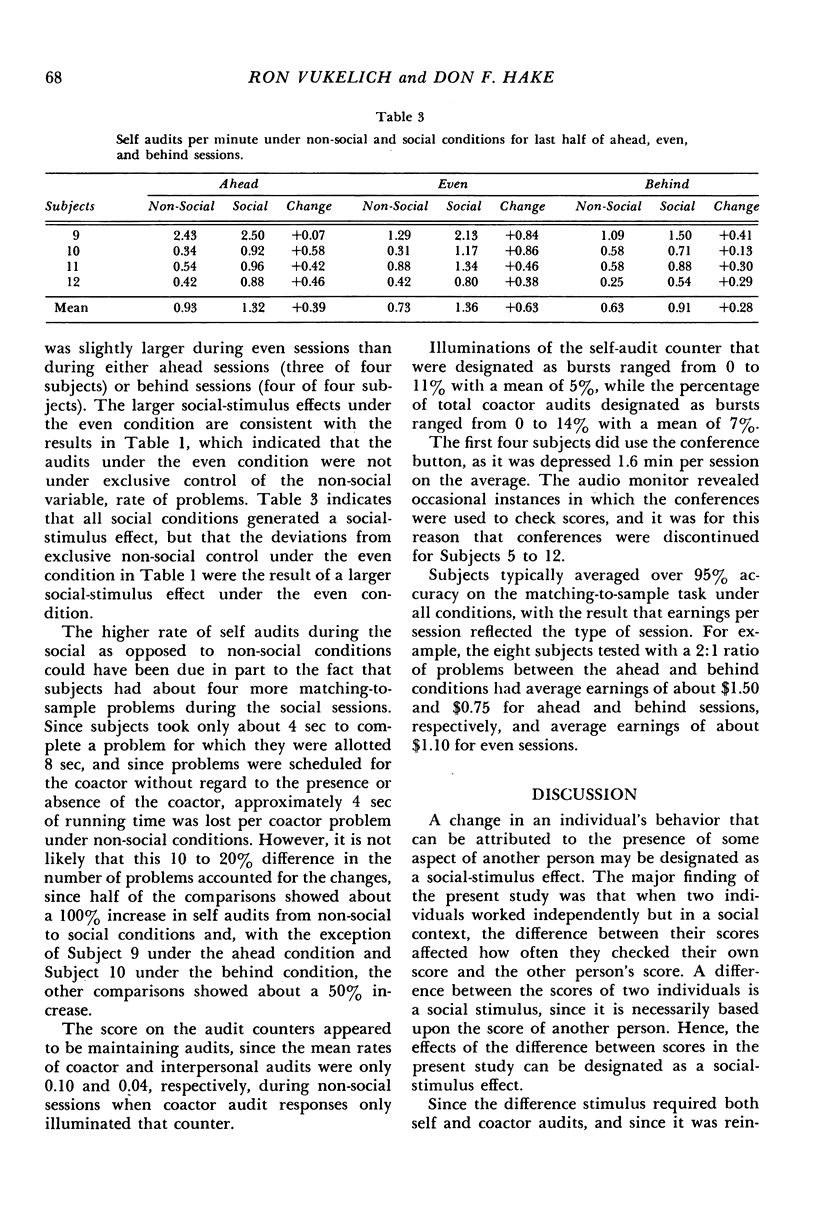
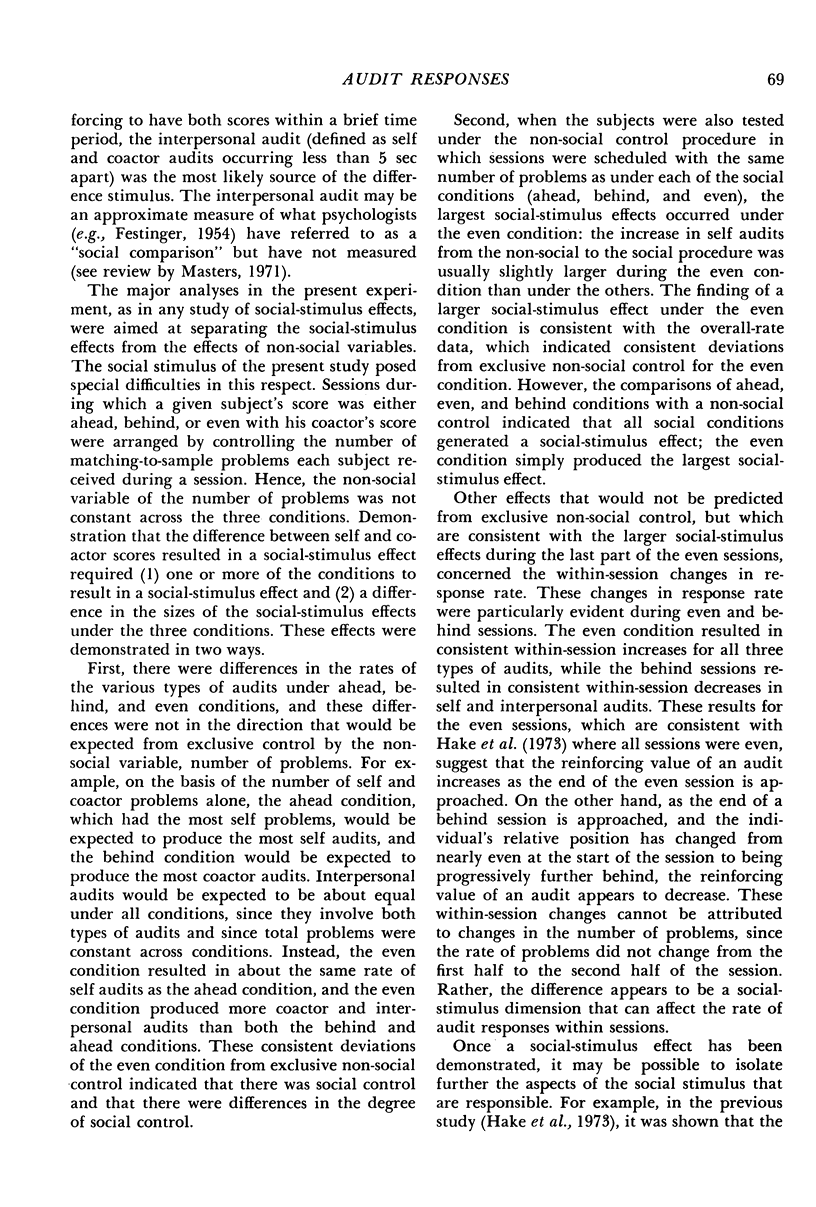

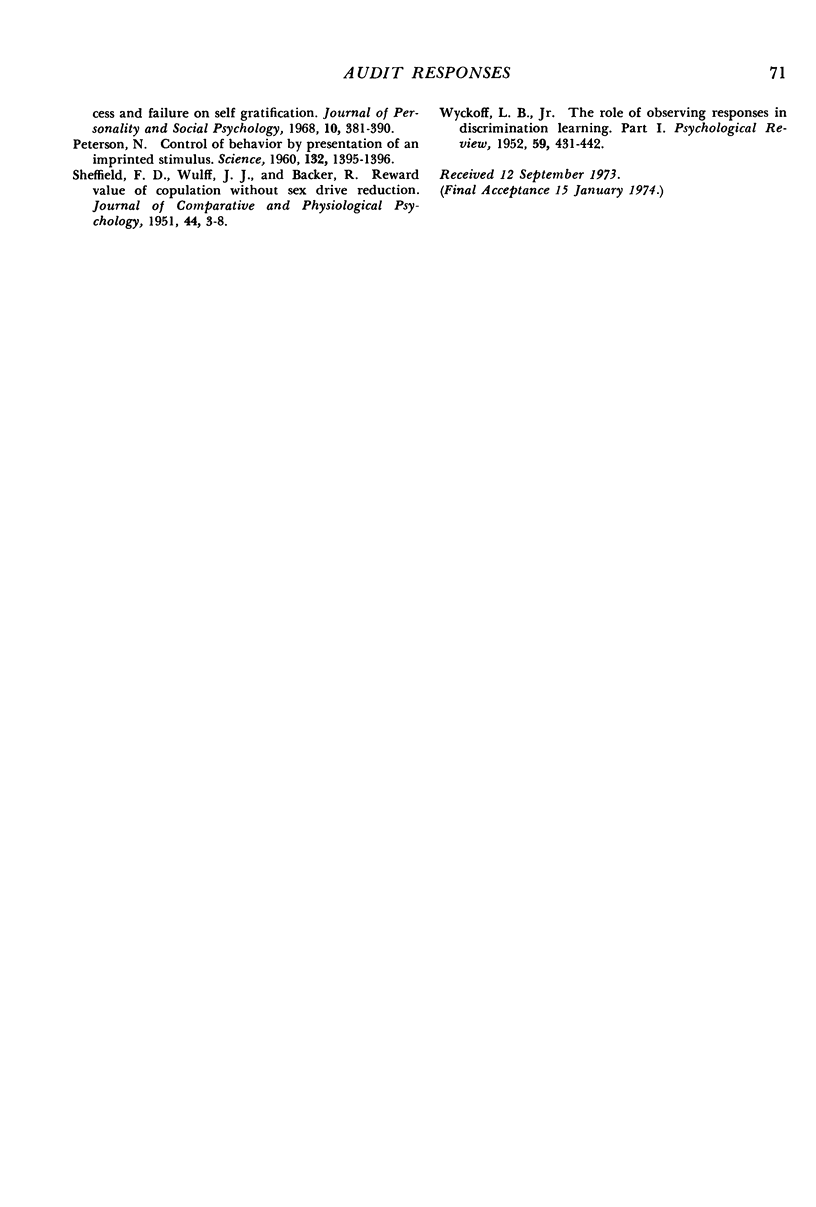
Selected References
These references are in PubMed. This may not be the complete list of references from this article.
- Bandura A., Whalen C. K. The influence of antecedent reinforcement and divergent modeling cues on patterns of self-reward. J Pers Soc Psychol. 1966 Apr;3(4):373–382. doi: 10.1037/h0023022. [DOI] [PubMed] [Google Scholar]
- CROSS H. A., HARLOW H. F. Observation of infant monkeys by female monkeys. Percept Mot Skills. 1963 Feb;16:11–15. doi: 10.2466/pms.1963.16.1.11. [DOI] [PubMed] [Google Scholar]
- Hake D. F., Vukelich R. A classification and review of cooperation procedures. J Exp Anal Behav. 1972 Sep;18(2):333–343. doi: 10.1901/jeab.1972.18-333. [DOI] [PMC free article] [PubMed] [Google Scholar]
- Hake D. F., Vukelich R., Kaplan S. J. Audit responses: responses maintained by access to existing self or coactor scores during non-social, parallel work, and cooperation procedures. J Exp Anal Behav. 1973 May;19(3):409–423. doi: 10.1901/jeab.1973.19-409. [DOI] [PMC free article] [PubMed] [Google Scholar]
- Hoffman H. S., Searle J. L., Toffey S., Kozma F. Behavioral control by an imprinted stimulus. J Exp Anal Behav. 1966 May;9(3):177–189. doi: 10.1901/jeab.1966.9-177. [DOI] [PMC free article] [PubMed] [Google Scholar]
- Laties V. G., Weiss B. Human Observing Behavior after Signal Detection. J Exp Anal Behav. 1960 Jan;3(1):27–33. doi: 10.1901/jeab.1960.3-27. [DOI] [PMC free article] [PubMed] [Google Scholar]
- PETERSON N. Control of behavior by presentation of an imprinted stimulus. Science. 1960 Nov 11;132(3437):1395–1396. doi: 10.1126/science.132.3437.1395. [DOI] [PubMed] [Google Scholar]
- WYCKOFF L. B., Jr The role of observing responses in discrimination learning. Psychol Rev. 1952 Nov;59(6):431–442. doi: 10.1037/h0053932. [DOI] [PubMed] [Google Scholar]


